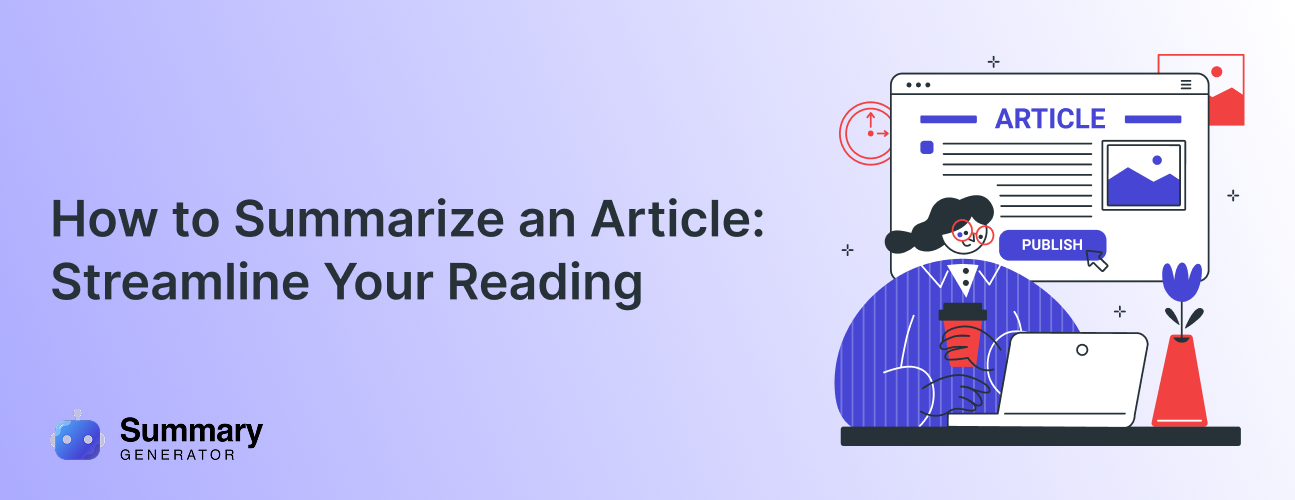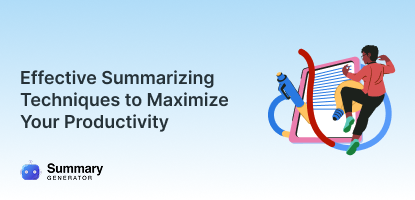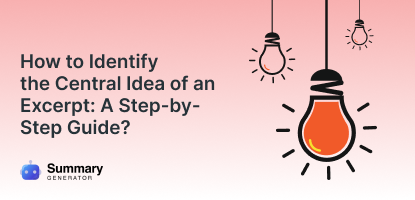Reading can be wonderful, but let’s be honest, it can also be time-consuming. Reading it from beginning to end can take a lot of time. And what if you have to read several articles like that? How do you remember everything? How do you compare different viewpoints? It can feel overwhelming.
The solution is to summarize the articles to extract only the important information. It is like having a shortcut. Instead of going through every single word, summarization helps you get the main points quickly. It condenses the information so you can see the important details without unnecessary stuff.
In this blog, we will discuss the summarization process and its role in reading. So, stay with us till the end!
Importance of Summarization for Effective Reading
A summary is a short version of a written work, like a novel, research paper, article, etc. The purpose of this brief text is to explain the main points. Usually, summaries range from a single sentence to a paragraph or several paragraphs.
Summarization is an important technique for effectively skimming extensive text. Whether you’re trying to summarize a paragraph or condense an entire article, this method filters out irrelevant or redundant details. That’s how it allows them to better understand and retain information by focusing on the most important aspects.
Crafting a short form of content, like a summary, improves comprehension drastically. It also ensures memory retention across various subjects and learning situations. In particular, crafting summaries in academic writing helps students and researchers condense complex material into clear, concise insights. Therefore, the right way to reduce the reading time is through summarization.
5 Steps to Create an Article Summary
Writing a strong yet concise version of an article requires more than just condensing the text. It involves understanding, organizing, and presenting the ideas. Here are the main steps for this process.
1. Read the Text Carefully
The most important thing in creating a summary is to read the original text thoughtfully. It is essential to understand its overall meaning, tone, and purpose before writing. While reading, pay close attention to the main ideas and supporting. You can also reread the text several times if needed.
2. Break Text into Sections
The next step is to split the document into smaller, manageable sections. Make sure to divide the document based on its structure. For example, an article has an introduction, main arguments, and a conclusion. You can split the main body into two to three parts depending on the topic of discussion. This will help you focus on each part individually.
3. Identify the Main Argument
Now, use all the sections to identify the main message of the article. This is the most important part of the summary, as it tells readers what the original text is about. Write down the details to include all the important information. You can also take notes of any key phrases or ideas that directly convey the text’s purpose.
4. Write the Summary
This is the part where the actual writing process starts. Use your notes to create a condensed version of the article. Add the title in the introductory sentence, followed by the main and supporting arguments. Then, close with the concluding sentence. After writing, give it a read to check its readability.
If the content is too lengthy to work with, use the AI Summary Generator. This tool will help you to simplify the process by quickly identifying and presenting the key points. It helps summarize full articles, blogs, or essays. Just add the text, and it will generate a summary instantly.
5. Proofread and Finalize
Once your brief is ready, compare it with the original article to ensure you have not missed any details. Look for inaccuracies or tones that may misinterpret the message. Your summary should reflect the original content.
Also, review your content for grammatical errors, typos, or other writing errors. This part is essential in all writing processes. For proofreading, use a reliable grammar checker that can help refine your summary to maintain professionalism.
Wrap Up
Improving reading comprehension is important in various fields, including academics, business, law, etc. We all know reading takes time, especially when the purpose is to learn the concepts. So, summarize the whole text to extract the main points from multiple articles. It cuts the reading time and provides a better understanding of the text.
The best way to summarize a full article is by using the Summary Generator. With this tool, you can craft summaries quickly to read and grab the essence. Or, use these summaries to add to reports, presentations, and proposals to reduce the reading time. Either way, this tool helps restructure your reading process.



